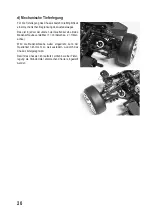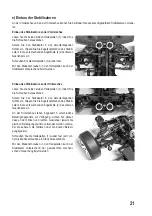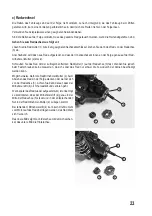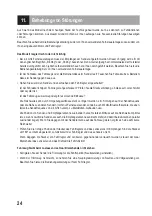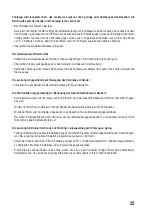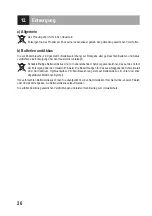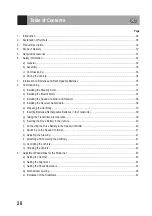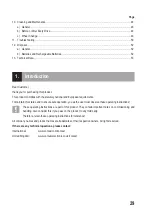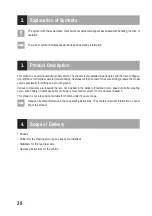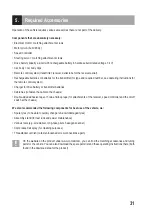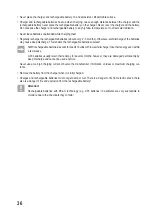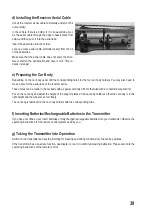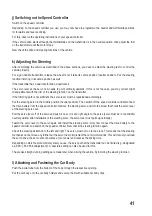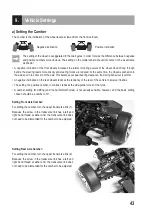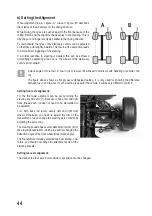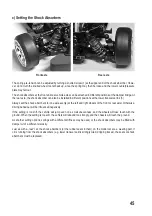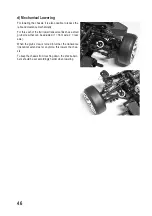
34
d) Driving the Vehicle
• Improper operation can cause serious damage to people and property! Only drive with the model directly in view.
This is why you shouldn’t drive at night.
• Only drive when your ability to react is unimpaired. Tiredness or the influence of alcohol or medication can cause
incorrect responses, just as with real vehicles.
• Please note that this model car must not be driven on public roads, places or streets. Also do not operate it on
private grounds without the owner‘s permission.
• Don’t drive towards animals or people!
• Avoid driving at very low outdoor temperatures. Plastic parts lose elasticity, which may lead to damage even in a
light accident.
• Do not drive in thunderstorms; don‘t drive under high-voltage power lines or in the proximity of radio masts.
• Don’t drive in the rain, through wet grass, water, mud or snow. Moisture may cause corrosion. In a LiPo battery,
entering moisture may set the battery on fire or even cause an explosion!
• As long as the vehicle is in operation you must always leave the transmitter switched on.
• When parking the vehicle, always switch off the vehicle‘s speed controller first and disconnect the drive battery from
the speed controller completely then. Now you may turn off the transmitter.
• If the batteries (or rechargeable batteries) in the transmitter are weak, their range decreases. Exchange the batte
-
ries or rechargeable batteries for new ones.
When the car‘s drive battery is weak, the car gets slower or no longer responds correctly to the transmitter.
In speed controllers with integrated BEC, the vehicle‘s drive battery not only supplies the motor though the
speed controller. The speed controller also generates the voltage/current required for operating the receiver
and the steering servo.
If the voltage in the drive battery is too low, the voltage at the receiver may also drop, causing the vehicle to
no longer respond to the control commands at the transmitter.
In this case, stop driving at once (switch off speed controller, disconnect drive battery from vehicle, switch off trans-
mitter). Then replace the vehicle drive battery or recharge the drive battery.
• The motor and drive as well as speed controller and drive battery of the vehicle get hot during operation. Wait at
least 5 to 10 minutes before exchanging the rechargeable battery.
Let the drive battery cool down completely before charging it.
Do not touch the motor, the speed controller or the rechargeable battery until they have cooled down. Danger of
burns!
• The undervoltage recognition in the speed controller must be activated when you operate the vehicle with a LiPo
drive battery (we recommend 3.0 V/cell or higher). Observe the operating instructions for the speed controller used
by you.
With the undervoltage recognition deactivated, the LiPo battery will suffer deep discharge and be destroy-
ed.

